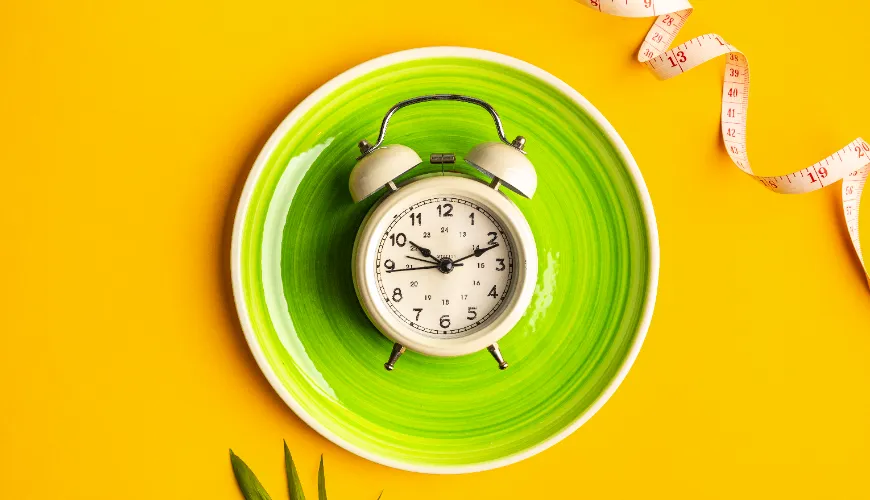
A Tasty Menu for Intermittent Fasting Without Unnecessary Starvation

Sample of Intermittent Fasting
Intermittent fasting is an increasingly popular strategy adopted by many people looking for ways to improve their health, lose weight, or achieve higher energy levels. This approach to eating isn't just another short-term trend but rather a lifestyle that combines periods of eating with fasting periods. This article will explain in detail how intermittent fasting works and offer a specific meal plan you can try.
What is Intermittent Fasting?
Intermittent fasting isn't a diet in the traditional sense. Instead of restricting specific foods, it focuses on when you eat. Essentially, it involves alternating periods of eating with periods of fasting. The goal is to give your body enough time to regenerate and optimize metabolic processes without having to count calories or adhere to strict eating plans.
Three methods of intermittent fasting are most commonly used:
-
16/8 Method: This is the most common variant, where fasting lasts 16 hours a day, and food is consumed in an 8-hour window. In practice, this often means skipping breakfast and having the first meal at noon, with the last meal around eight in the evening.
-
5:2 Method: With this method, you eat normally for five days a week, while on the remaining two days, you reduce calorie intake to about 500-600 kcal per day.
-
Eat-Stop-Eat: This approach involves fasting for 24 hours once or twice a week. During the fasting day, only water, unsweetened teas, or coffee are consumed.
Each of these approaches has its benefits, and it's essential to choose the one that best suits your lifestyle and goals.
What Does a Meal Plan Look Like During Intermittent Fasting?
For intermittent fasting to be effective and sustainable, it's crucial for the meal plan during eating periods to be balanced, nutrient-rich, and sufficiently filling. Let's look at an example of a meal plan for the most popular 16/8 method.
Morning Routine (6:00 - 12:00)
The morning part of the day begins with a fasting period. During this time, you avoid eating and focus on hydrating your body. Water is essential, but you can also enjoy unsweetened tea or coffee. These beverages help keep hunger at bay while providing a sense of energy.
Tip: If skipping breakfast is challenging for you, try gradually extending the fasting period by an hour each day until your body adapts to the new routine. Many people find that after a few weeks, they no longer feel the need to eat early in the morning and even feel more energetic.
First Meal of the Day (12:00 - 13:00)
When it's time for the first meal, it's important that it is nutritious and balanced. After a long fast, your body needs to replenish energy and be supplied with quality nutrients.
Sample Meal Plan:
-
Egg Omelette with Avocado and Whole Grain Bread: Eggs are rich in protein and healthy fats, which provide energy for the day. Avocado contains monounsaturated fats that are good for the heart, and whole grain bread is a source of fiber and complex carbohydrates, ensuring a long-lasting feeling of fullness.
-
Quinoa Salad with Grilled Chicken, Avocado, and Spinach: This salad is rich in protein from chicken, complex carbohydrates from quinoa, and healthy fats from avocado. Spinach adds a dose of iron and vitamins.
-
Smoothie Bowl: If you prefer a lighter meal, try a smoothie bowl made from a mix of berries, banana, chia seeds, and Greek yogurt. This dish is full of antioxidants, fiber, and protein.
Afternoon Snack (15:00 - 16:00)
Between main meals, it's good to include a light snack to give you energy and keep you full until dinner. Here are some options:
-
Apple with Nut Butter: An apple is a great source of fiber and vitamins, while nut butter provides healthy fats and protein.
-
Yogurt with Nuts and Seeds: Low-fat Greek yogurt is rich in protein and calcium. Add a handful of nuts and seeds for an extra dose of healthy fats and fiber.
-
A Handful of Almonds and Dried Fruit: Almonds are an excellent source of healthy fats, protein, and vitamin E, while dried fruit provides natural sugars and energy.
Dinner (19:00 - 20:00)
Dinner should be light yet nutritious. It should contain enough protein, fiber, and healthy fats, but also not be too heavy to avoid burdening digestion before bedtime.
Sample Meal Plan:
- Baked Salmon Fillet with Quinoa and Vegetables: Salmon is an excellent source of omega-3 fatty acids, which support heart and brain health. Quinoa adds complex carbohydrates, and vegetables like broccoli or spinach provide necessary vitamins and minerals.
-
Chicken Stir-Fry with Brown Rice and Vegetables: This quick and tasty dish contains lean protein from chicken, fiber, and complex carbohydrates from brown rice, and antioxidants from vegetables like bell peppers, zucchini, and carrots.
-
Grilled Vegetables with Chickpeas and Feta: If you're in the mood for a vegetarian meal, grilled vegetables like eggplant, zucchini, and bell peppers with added chickpeas and crumbled feta is a great choice. This dish is full of fiber, plant-based proteins, and flavors.

